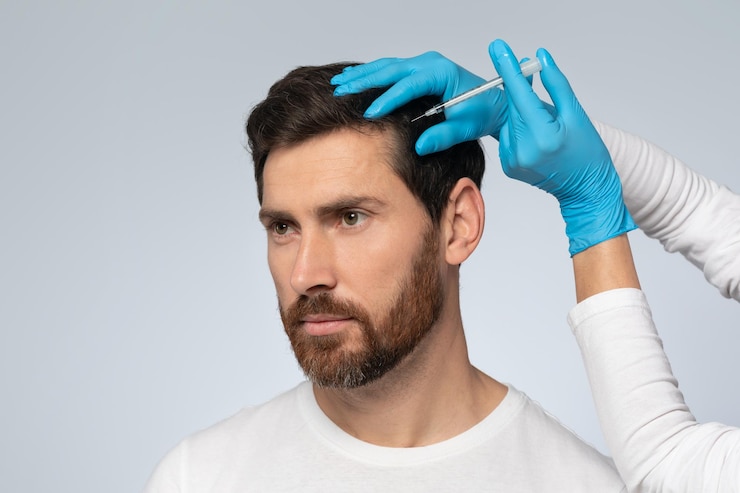Does PRP Hair Treatment in DubaiWork for Everyone? Understanding Who Can Benefit Most
PRP hair treatment in Dubai is gaining popularity as a natural, non-surgical solution for hair thinning and early-stage hair loss. But one common question remains:
“Will PRP work for me?”
While PRP has shown great success for many, results can vary depending on individual conditions. In this blog, we’ll explain who responds best to PRP, when it’s most effective, and what to consider before starting treatment.
🧬 How PRP Hair Therapy Works
PRP (Platelet-Rich Plasma) therapy involves injecting a concentrated form of your blood plasma into areas of thinning hair. This plasma is rich in growth factors that:
Stimulate dormant hair follicles
Promote new hair growth
Improve scalp circulation
Strengthen existing hair
However, the effectiveness of PRP depends on the health of your follicles — and whether they’re still active.
✅ Ideal Candidates for PRP Hair Treatment
PRP works best for people with:
1. Early-Stage Hair Loss
If you’ve recently noticed thinning or increased shedding, PRP can slow down hair loss and reactivate follicles.
2. Androgenetic Alopecia (Genetic Hair Loss)
Men and women with male or female pattern baldness often see visible improvement in hair density and thickness.
3. Postpartum or Stress-Induced Hair Shedding
Temporary hair loss due to hormonal changes or stress can respond quickly to PRP therapy.
4. Hair Thinning (Not Bald Patches)
PRP helps more when hair is thinning — not when the scalp is fully bald. Follicles must still be alive, even if dormant.
5. Good General Health
People with no chronic medical conditions, strong immune systems, and healthy lifestyles tend to see better results.
❌ Who May Not Benefit from PRP
PRP may be less effective or not recommended for individuals with:
✖️ Advanced Baldness
If hair follicles are completely destroyed or replaced by scar tissue, PRP cannot regenerate them.
✖️ Alopecia Areata or Autoimmune Conditions
Results may be unpredictable due to the body attacking its own hair follicles.
✖️ Severe Hormonal Imbalances
Untreated thyroid disorders, PCOS, or other hormonal issues may continue causing hair loss despite PRP.
✖️ Poor Platelet Quality
People with low platelet counts or blood disorders may not generate high-quality PRP.
✖️ Chronic Illnesses
Conditions like diabetes, cancer, or liver disease may reduce healing ability and effectiveness of the treatment.
📊 How to Know if You’re a Good Candidate
| Factor | PRP Response Likely? |
|---|---|
| Mild to moderate thinning | ✅ High |
| Recent hair shedding | ✅ High |
| Visible bald patches | ❌ Low |
| Completely bald scalp | ❌ Not suitable |
| Underlying health issues | ⚠️ Depends on case |
| Hormonal imbalance | ⚠️ May need treatment first |
A scalp assessment and blood analysis are usually done in professional clinics to determine candidacy.
🧪 What Affects PRP Results?
✅ Factors That Improve PRP Response:
Early treatment before hair follicles die
A healthy lifestyle (hydration, sleep, balanced diet)
Following post-treatment care
Avoiding smoking and alcohol
Attending all recommended sessions
Using supportive treatments (e.g., microneedling, minoxidil)
❌ Factors That Delay or Block Results:
Skipping sessions
Advanced baldness or scarring
Medical conditions not addressed
Poor platelet concentration in blood
Stress and poor nutrition
🔁 PRP + Other Treatments for Better Results
Even if you’re not a perfect standalone PRP candidate, combining it with other hair growth methods can make a big difference.
PRP + Microneedling: Enhances absorption and healing
PRP + Minoxidil: Boosts regrowth and density
PRP + Supplements: Supports hair health from within
PRP + Hair Transplant: Improves graft survival and healing
💬 FAQs: PRP Effectiveness
❓ Does PRP regrow hair in bald spots?
Only if follicles are still alive. PRP doesn’t work on shiny, smooth, fully bald patches where no follicles remain.
❓ How soon will I see if it’s working?
Most people see reduced shedding in 3–4 weeks and visible regrowth in 2–4 months.
❓ What if PRP doesn’t work for me?
Your doctor may recommend combining treatments or exploring alternatives like laser therapy or hair transplant.
✅ Final Thoughts
PRP hair treatment in Dubai is a safe and effective option — but not a one-size-fits-all solution. It works best for people in the early stages of hair thinning, with healthy follicles and no major health concerns.
The best way to know if you’re a candidate? Schedule a consultation with a qualified PRP specialist who can assess your hair loss type, scalp condition, and overall health to design a personalized treatment plan.
